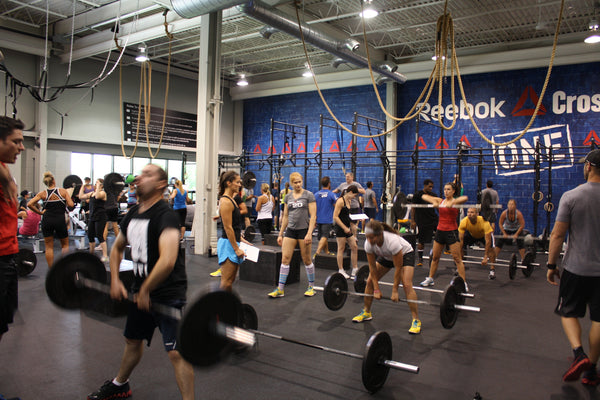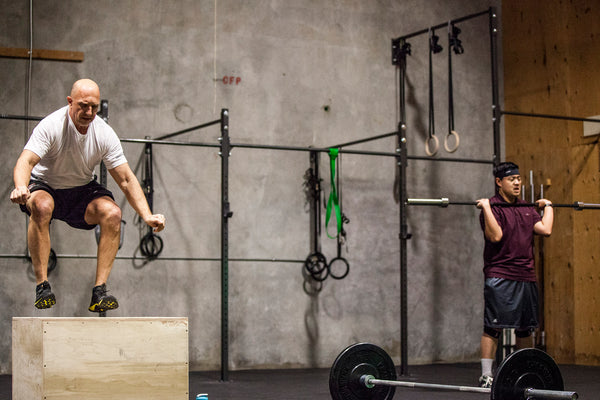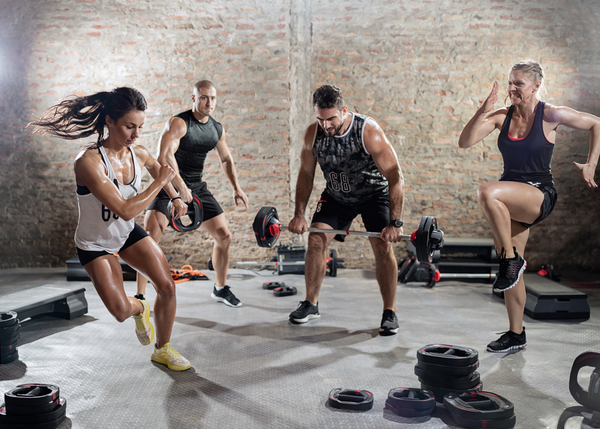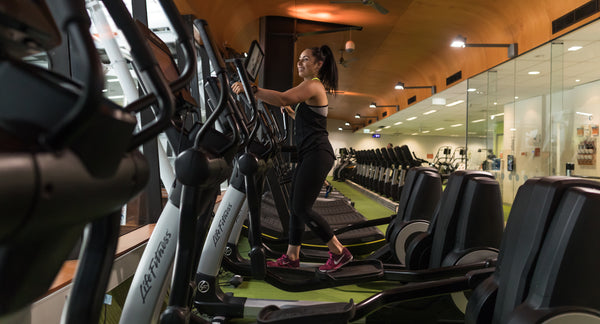- Continue Shopping
- Your Cart is Empty
What are the Top 10 Fitness Trends for 2018? They Might Surprise You.

The start of a new year brings with it the usual predictions on what is about to be hot and what’s not. Based on your reading this blog, you are most likely interested in personal fitness trends for the coming year. Well Sparky, you’ve come to the right place because the granddaddy of all fitness surveys was released about a month ago and you can read all out what these folks think you’re going to be doing to work up a sweat in 2018!
The American College of Sports Medicine (ACSM) surveyed more than 4,000 fitness professionals, and here’s the hottest trend for the coming year. Drumroll please!!!
High Intensity Interval Training (HIIT) is forecast as next year’s most popular trend in fitness. HIIT training is made up of bursts of all-out exercise followed by short periods of rest for recovery.
“High intensity interval training has been a consistently high-ranking trend on the forecast in recent years, appearing in the top three since 2014,” said Walter R. Thompson, Ph.D., FACSM, president of ACSM and the lead author of the survey and associate dean in the College of Education & Human Development at Georgia State University in Atlanta. “Even though survey respondents warned of a relatively higher risk of injury associated with HIIT, it continues to be very popular in gyms across the world.”
Is HIIT Dangerous?
A press release from the ACSM noted that survey respondents were concerned that some of their clients are reluctant to participate in HIIT due to perceived risks, and the fitness pros often shared those concerns. So, is HIIT dangerous?
“HIIT offers participants a good workout that can be done without a lot of time or equipment,” continued Thompson. “Research shows that with proper precautions, like working with a certified personal trainer, HIIT can be a safe, effective and fun way to exercise.”
Those involved with CrossFit training will not be surprised by the popularity of HIIT, especially as it relates to having a professional trainer running the show. In fact, the popularity of CrossFit has had a significant impact on this fitness survey.
The press release further noted that the survey, now in its twelfth year, “helps the health and fitness industry make critical programming and business decisions. ACSM expanded this year’s survey to include partner organizations in the Coalition for the Registration of Exercise Professionals® (CREP), and the 4,000 respondents set a record that more than doubled that of previous years.
The survey provides 40 potential trends to choose from, and the top 20 were ranked and published by ACSM.

The top 10 fitness trends for 2018
- High-Intensity Interval Training (HIIT): HIIT involves short bursts of activity followed by a short period of rest or recovery, these exercise programs are usually performed in less than 30 minutes.
- Group Training: Group exercise instructors teach, lead and motivate individuals though intentionally designed group exercise classes. Group programs are designed to be motivational and effective for people at different fitness levels with instructors using leadership techniques that help individuals in their classes achieve fitness goals. Again, this is a reflection of the increased popularity of group training program such as CrossFit.
- Wearable Technology: includes fitness trackers, smart watches, heart rate monitors and GPS tracking devices. Being able to download this fitness data to social media and thereby use if for motivation and bragging rights, is an ancillary reason for the popularity of this trend.
- Body Weight Training: Body weight training uses minimal equipment, making it more affordable. Not limited to just push-ups and pull-ups, this trend allows people to get “back to the basics” with fitness. This is another trend that owes its popularity to CrossFit training.
- Strength Training: Strength training remains a central emphasis for many health clubs and more specialized programs such as CrossFit. The ASCM reports noted that “Incorporating strength training is an essential part of a complete exercise program for all physical activity levels and genders. (The other essential components are aerobic exercise and flexibility.)”
- Educated and Experienced Fitness Professionals: Given the large number of organizations offering health and fitness certifications, it’s important that consumers choose professionals certified through programs that are accredited by the National Commission for Certifying Agencies (NCCA), such as those offered by ACSM. The CrossFit trainer certification is also a comprehensive and rigorous accreditation.
- Yoga: Based on ancient tradition, yoga utilizes a series of specific bodily postures practiced for health and relaxation. This includes Power Yoga, Yogalates, Bikram, Ashtanga, Vinyasa, Kripalu, Anurara, Kundalini, Sivananda and others.
- Personal Training: The report of this survey notes that “More and more students are majoring in kinesiology, which indicates that they are preparing themselves for careers in allied health fields such as personal training. Education, training and proper credentialing for personal trainers have become increasingly important to the health and fitness facilities that employ them.”
- Fitness Programs for Older Adults. The demographics don’t lie. As a population, we are living longer and as the baby boom generation ages into retirement, some of these people have more discretionary money than their younger counterparts. Therefore, many health and fitness professionals are taking the time to create age-appropriate fitness programs to keep older adults healthy and active.
- Functional Fitness. This is a trend toward using strength training to improve balance and ease of daily living. This type of functional training is the essence of CrossFit and many believe this trend will continue to rise over the next few year. Part of this reason is that functional fitness and special fitness programs for older adults are closely related. See #9 above.
The full list of top 20 trends is available in the article "Worldwide Survey of Fitness Trends for 2018."
What do you think of the results of this survey? Is it accurate or BS? Let us know what you think. Need a quote for CrossFit equipment? Just click here and we’ll get back to you pronto.CrossFit Beats Boredom and Traditional Gyms are Taking Notice

When a newbie walks into what is usually an industrial-looking CrossFit facility, she or he will likely notice some things that are very different from the stainless steel and glass, big box “retail” gyms. First, the traditional health clubs are packed during January and February with well-meaning, overweight but unfocused participants and then ghost towns for the rest of the year. While the CrossFit box is buzzing with the about the same number of participants year-around and they are laser-focused on achieving fitness goals.
There is another big difference between CrossFit and traditional gyms which the fitness industry has started to notice. For several decades, the traditional facilities have featured row after row of cardio and weight machines. There have never been any cardio or weight machines in CrossFit gyms. In fact, the functional training (free weights, rope climbing, intense HIIT training, etc.) done in a group setting and led by an experienced fitness expert is EXACTLY what sets CrossFit apart from traditional health clubs.
Don’t look now, but the shiny retail facilities are wising up to the popularity of CrossFit training. They are replacing those cardio and weight machines with free weights and group training.
Rage Against the Machine

According to a recent article in the Wall Street Journal, Charles Huff, the vice-president of facilities for 24-Hour Fitness noted that the 420-location chain has scaled back cardio and weight machines to 50 percent of floor space from about 66 percent it had allocated previously. The traditional health club “now devotes the other half of floor space to free weights and functional training, which includes things like kettlebell swings and body-weight exercises with TRX suspension straps. It has also expanded its studio group exercise classes.”
The article continued by noting that “stair-steppers” and some elliptical machines in particular are waning, but stepmills continue to enjoy some popularity. Leg and shoulder presses remain popular in these traditional gyms, while narrow-focus ones such as inner/outer thigh machines “gather dust.”

The piece pointed to several trends driving this shift away from machines. “Boutique fitness is booming and many of those studios focus on guided workouts with few or no machines. Some members of CrossFit gyms, meanwhile, are migrating to less expensive health clubs with newly added or expanded barbell weightlifting facilities.”
A primary driver of this trend on the part of big box health clubs has nothing to do with machine/anti-machine client preferences. It is the oldest business motivation there is: MONEY. “Trainer-led sessions generate extra revenue where a treadmill or weight machine can’t.”
CrossFit: Boring it’s Not
The popularity of CrossFit training has forced many heretofore successful traditional clubs to “up their bars” for club members in order to remain profitable. The days when participants would arrive at the gym and immediately jump on a treadmill or elliptical and stay there for a half-hour are over.
Why? It’s BORING and anything boring starts to feel a LOT like work.
The group exercises and more intense training pioneered by CrossFit challenge (some would say “beat down”) participants and successfully completing this often grueling training brings about an esprit de corps among the class member. This leads to a greater wiliness to push one’s comfort boundaries and results in better results.
CrossFit training may be hard, but it is seldom boring. Boredom is the bane of most fitness programs and it is the reason that come March, that traditional health club, with its row after row of machines, will once again be a ghost town. While over at the CrossFit box, the participants will be gasping for air, struggling with kettlebells, free weights and tire flips, screaming encouragement to their new friends in the class and kicking butt.
Contact us and tell us.




